Unit 1 - Waves
Pre-look
(Progress until 15/01/2024)
![]()
![]()
(More pictures can be found in the outcome part👇)
Concept
This is an interactive art installation exploring the relationship between the individual and society. It not only delves into Michel Foucault's theory of social power but also reflects the intricate relationship between personal discourse and societal influence. By blending technology and art, this work offers audiences a new perspective to reassess the relationship between individuals and the collective.
This piece examines the complex relationship between personal discourse and social context through an interactive sound installation. The central speaker plays the user's voice, symbolizing individual viewpoints, while surrounding speakers, connected through IoT technology, broadcast live societal voices from social media and news sites, reflecting the diversity and dynamics of public opinion. When users speak to the central speaker, their voices are recorded and played alongside these societal voices, creating ripple patterns on the surface of the liquid in the installation. This act symbolizes the spread and impact of personal discourse in society and the shaping of individual knowledge and viewpoints by the social context. Notably, while individual viewpoints may seem minor and transient against the backdrop of powerful public opinion, their existence is marked in the momentary formation of ripples.
The device showcases the dissemination process of individual opinions in society, highlighting the fleeting nature of these personal discourses in a complex and powerful social context. This experience encourages viewers to contemplate their position in public discourse and how to find and maintain their unique voice amidst widespread social discussions.
Idea Development (Mind Map)
![]()
![]() Original version Translated version
Original version Translated version
Key words:
Relationship between Individual and Society, Social Power, Self-identify, Situated Knowledge, Information Dissemination and Personal Perspectives, “Swarm Intelligence”, Gaze, Interactive Art.
Background
1. Aftermath of Protest
![]()
![]()
2. Free Speech?
![]()
![]()
![]()
![]()
![]()
3. Government Marketing and Propaganda
![]()
![]()
![]()
Government Marketing and Propaganda are crucial in influencing public opinion and controlling information flow. Propaganda, particularly, manipulates information to sway public perception, playing a significant role in maintaining social control and influencing domestic and international perspectives.
4. Education and Thought Control- “Another Brick in the Wall”
From historical and sociological perspectives, educational institutions serve not only as venues for the transmission of knowledge but also as conduits for the dissemination of social norms, values, and expectations. Through education, power structures are maintained, and social hierarchies and norms are perpetuated. Educational systems often reflect the values of the ruling class or dominant culture, indirectly shaping the thoughts and behaviors of the younger generation through the setting of curriculum content and teaching methodologies.
Furthermore, the assessment and examination mechanisms within the educational process represent forms of control, setting standards of success and determining future opportunities for individuals. These mechanisms often reinforce existing social structures, prompting individuals to learn and perform within a specific framework.
Research
1. Michel Foucault's Theory
![]()
![]()
2. Power in Cyberworld
Protocol,Book Written by Alexander R. Galloway
![]()
Big Data and User Preferences
![]()
3. Cymatics
![]()
4. Media and Deception (Dis-information)
Disinformation refers to the deliberate spread of false information intended to deceive or mislead, distinguishing it from misinformation, which is the unintentional spread of false information. Common techniques and tactics in disseminating disinformation include fabricating entirely false stories, manipulating real information or images to create misleading contexts, impersonating identities or sources to lend credibility, selectively using truths to deceive, and employing social media bots and trolls for widespread distribution.
Disinformation is often propagated through social media platforms due to their extensive reach and ease of content sharing. Traditional media, including television and newspapers, can also be sources of disinformation.
5. Audience and Interaction
I studied interactive art and interactive installations in museums and came up with some ideas about audience interaction design.
They Are:
Clear instructions: Provide clear, concise instructions on how to interact with the artwork. This can be done through signage, guided commentary or interactive screens.
Visual cue: Use visual elements to draw the audience's attention and indicate how they should interact.
Illuminating question: Inspire curiosity and engagement by asking questions or setting situational challenges. These questions can be philosophical, about the meaning of the work, or about the viewer's own experience.
Interactive elements: Contains physically operable elements, such as buttons, touch screens, movable parts, etc., to facilitate the viewer's physical interaction with the work.
Dynamic feedback: Provide immediate visual, auditory or tactile feedback as the viewer interacts with the artwork, enhancing the attraction and satisfaction of the interactive experience.
6. Red - on behalf of Power (color reference)
![]()
Red in Chinese culture is often associated with celebration, wealth, and power.
In the film, the red lanterns, as a primary visual element, symbolize the master's favor and special attention to a particular wife. This favoritism brings temporary power and privileges, but also comes with intense competition and jealousy. Additionally, red also symbolizes control and oppression. The female characters in the film are trapped within strict traditions and rituals, which are emphasized and solidified through the use of red lanterns. The lanterns become tools for controlling the fate of the women, reflecting broader societal and cultural structures of gender inequality.
Inspiration
1. Installations
![]()
![]()
![]()
![]()
![]()
![]()
![]()
![]()
![]()
![]()
![]()
![]()
![]()
![]()
![]()
![]()
![]()
![]()
![]()
Videos about sound visualization and interaction:
https://www.youtube.com/watch?v=f1JTgyMi9OE
https://www.youtube.com/watch?v=Q3oItpVa9fs
https://www.bilibili.com/video/BV1wi4y1w7q5/?spm_id_from=333.337.search-card.all.click
Artworks & Events:
THE UNILEVER SERIES by Aiweiwei
https://www.tate.org.uk/whats-on/tate-modern/unilever-series/unilever-series-ai-weiwei-sunflower-seeds
Reface [Portrait Sequencer] by Golan Levin
https://www.flong.com/archive/projects/reface/index.html
Augmented Hand Series by Golan Levin
https://www.flong.com/archive/projects/augmented-hand-series/index.html
Learning to See by Memo
https://www.memo.tv/works/learning-to-see/
DRAWING OPERATIONS by Sougwen
https://sougwen.com/project/drawing-operations-unit-generation-3
Brick Lane: Chinese political slogans
https://www.bbc.co.uk/news/uk-england-london-66391605
2. Panopticon Prison
![]()
![]()
The Panopticon is not just a prison architecture; it represents a philosophical concept about power, surveillance, and social control. Bentham believed that this design could effectively monitor and control inmates while reducing the need for a large number of guards.
This design embodies a form of “invisible power” by making the monitored feel that they could be watched at any time, thereby prompting them to voluntarily follow rules and order.
The Panopticon also affected the later design I did ⬇️
Design
1. 3D Modeling
![]()
![]()
![]()
![]()
2. Elements & Material Choosing
![]()
![]()
![]()
![]()
![]()
![]()
![]()
Crit on 28th Dec 2023
![]()
Making Process
![]()
![]()
![]()
![]()
![]()
![]()
![]()
![]()
![]()
![]()
![]()
![]()
![]()
![]()
![]()
![]()
![]()
Connected and secured units with the iron rope.
Tried to control the audio unit with an audio adapter but failed (will try again later)
Outcome
(Progress Until 15/01/2024)
![]()
![]()
![]()
![]()
![]()
![]()
![]()
![]()
Reflection & Concerns
Pre-look
(Progress until 15/01/2024)

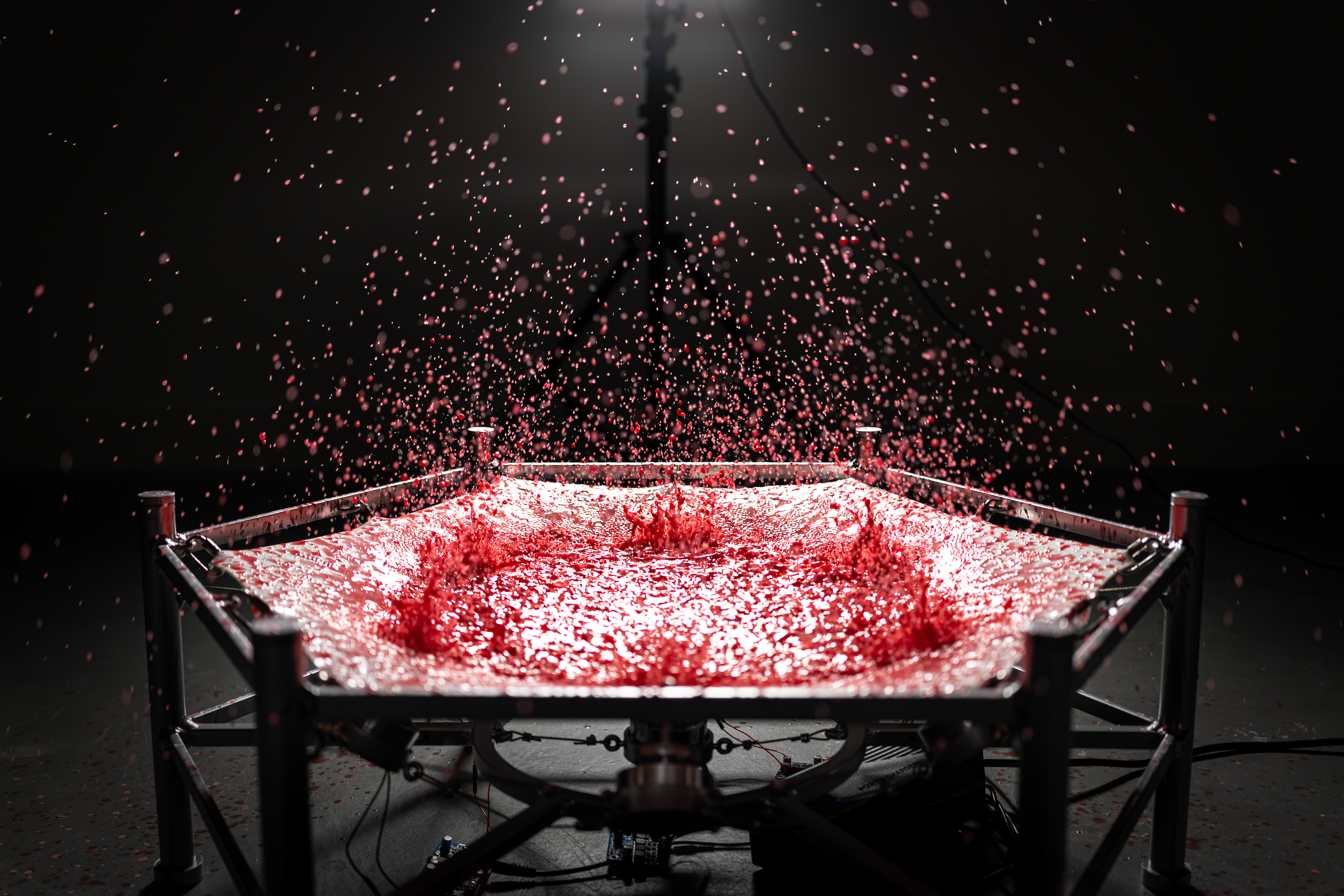
(More pictures can be found in the outcome part👇)
Concept
This is an interactive art installation exploring the relationship between the individual and society. It not only delves into Michel Foucault's theory of social power but also reflects the intricate relationship between personal discourse and societal influence. By blending technology and art, this work offers audiences a new perspective to reassess the relationship between individuals and the collective.
This piece examines the complex relationship between personal discourse and social context through an interactive sound installation. The central speaker plays the user's voice, symbolizing individual viewpoints, while surrounding speakers, connected through IoT technology, broadcast live societal voices from social media and news sites, reflecting the diversity and dynamics of public opinion. When users speak to the central speaker, their voices are recorded and played alongside these societal voices, creating ripple patterns on the surface of the liquid in the installation. This act symbolizes the spread and impact of personal discourse in society and the shaping of individual knowledge and viewpoints by the social context. Notably, while individual viewpoints may seem minor and transient against the backdrop of powerful public opinion, their existence is marked in the momentary formation of ripples.
The device showcases the dissemination process of individual opinions in society, highlighting the fleeting nature of these personal discourses in a complex and powerful social context. This experience encourages viewers to contemplate their position in public discourse and how to find and maintain their unique voice amidst widespread social discussions.
Idea Development (Mind Map)


Key words:
Relationship between Individual and Society, Social Power, Self-identify, Situated Knowledge, Information Dissemination and Personal Perspectives, “Swarm Intelligence”, Gaze, Interactive Art.
Background
1. Aftermath of Protest

Iran witnessed widespread protests following the death of Mahsa Amini in police custody. The protests, demanding an end to the government's repression and mismanagement, faced severe crackdowns by the regime, including the killing and public execution of protestors. Activists report that at least 19,200 people were detained and 537 protesters killed.
Web Link: 1, 2
Web Link: 1, 2

During the COVID-19 pandemic, people have been locked in their homes with limited access to food and supplies, while such measures have left people ill-equipped to fight disasters, and many people have died in fires. People took to the streets to protest for freedom, but the protesters were beaten and imprisoned by the police.
Web Link
Web Link
2. Free Speech?
The issue of social media accounts being blocked or suspended has become a common problem. Users must adhere to certain rules when posting their statements. While these rules are designed to maintain order on the platforms, they also spark debates over freedom of speech. Excessive control and censorship can limit personal expression and, in some cases, may even be used as tools for political or societal control.
More importantly, the implementation of account suspension policies sometimes lacks transparency and consistency, leading to user confusion and perceptions of unfairness. In certain situations, users might be penalized due to misunderstandings or unclear policies, raising questions about the fairness and objectivity of the platform.
More importantly, the implementation of account suspension policies sometimes lacks transparency and consistency, leading to user confusion and perceptions of unfairness. In certain situations, users might be penalized due to misunderstandings or unclear policies, raising questions about the fairness and objectivity of the platform.




The public speech space is increasingly censored, and every aspect of people's lives, from political thought to sex life, is tightly controlled. In Chinese society, some topics are extremely sensitive, such as political and social events. Some truths are not allowed to be told, whether in real life or online. When a person speaks on a sensitive topic, there is a high probability that he or she will be banned, banned, or even imprisoned. At the same time, this invisible power controls social media, news, film and TV drama creation, articles...
WebLink: 1, 2, 3, 4
WebLink: 1, 2, 3, 4

3. Government Marketing and Propaganda
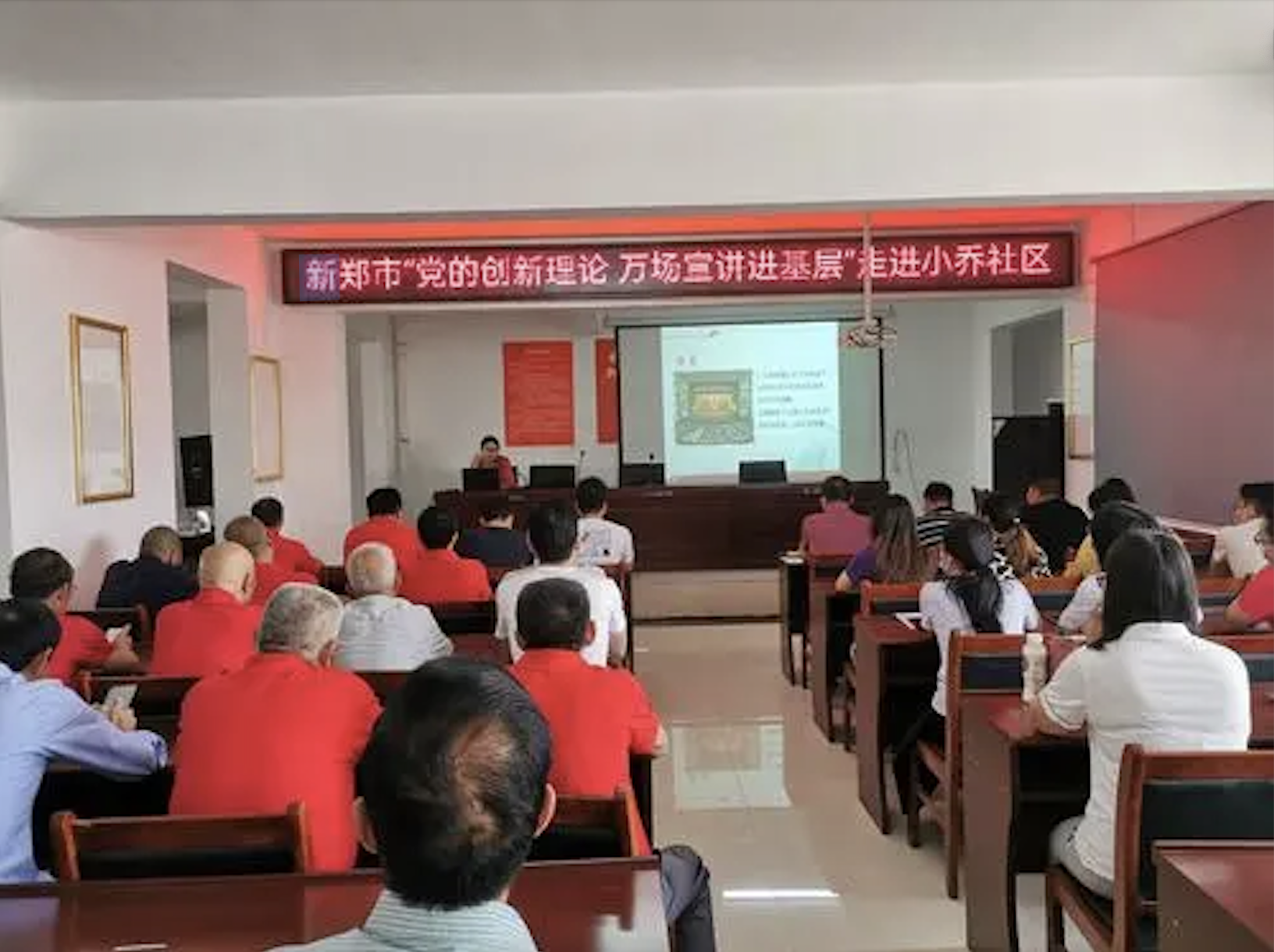


Government Marketing and Propaganda are crucial in influencing public opinion and controlling information flow. Propaganda, particularly, manipulates information to sway public perception, playing a significant role in maintaining social control and influencing domestic and international perspectives.
4. Education and Thought Control- “Another Brick in the Wall”
From historical and sociological perspectives, educational institutions serve not only as venues for the transmission of knowledge but also as conduits for the dissemination of social norms, values, and expectations. Through education, power structures are maintained, and social hierarchies and norms are perpetuated. Educational systems often reflect the values of the ruling class or dominant culture, indirectly shaping the thoughts and behaviors of the younger generation through the setting of curriculum content and teaching methodologies.
Furthermore, the assessment and examination mechanisms within the educational process represent forms of control, setting standards of success and determining future opportunities for individuals. These mechanisms often reinforce existing social structures, prompting individuals to learn and perform within a specific framework.
Research
1. Michel Foucault's Theory
Foucault's theories primarily address the relationships between power and knowledge, and how they are used as a form of social control through societal institutions.


Discipline and Punish
Foucault examines how the aim of the modern penal system shift from physical punishment to psychological control. He introduces the concept of the "panopticon" to illustrate how modern societies maintain order and control through surveillance and normalization techniques. Foucault argues that this surveillance permeates various layers of society, including schools, hospitals, and the military.
Foucault examines how the aim of the modern penal system shift from physical punishment to psychological control. He introduces the concept of the "panopticon" to illustrate how modern societies maintain order and control through surveillance and normalization techniques. Foucault argues that this surveillance permeates various layers of society, including schools, hospitals, and the military.
The History of Sexuality
He suggests that there has been an increasing discourse on sex, which is actually an exercise of power, aimed at categorizing and controlling sexual behavior. He pays special attention to how sexuality is linked to power structures and used as a tool for individual identity and social order. He explores the concept of Biopolitics and Biopower in this book.
He suggests that there has been an increasing discourse on sex, which is actually an exercise of power, aimed at categorizing and controlling sexual behavior. He pays special attention to how sexuality is linked to power structures and used as a tool for individual identity and social order. He explores the concept of Biopolitics and Biopower in this book.
2. Power in Cyberworld
Protocol,Book Written by Alexander R. Galloway
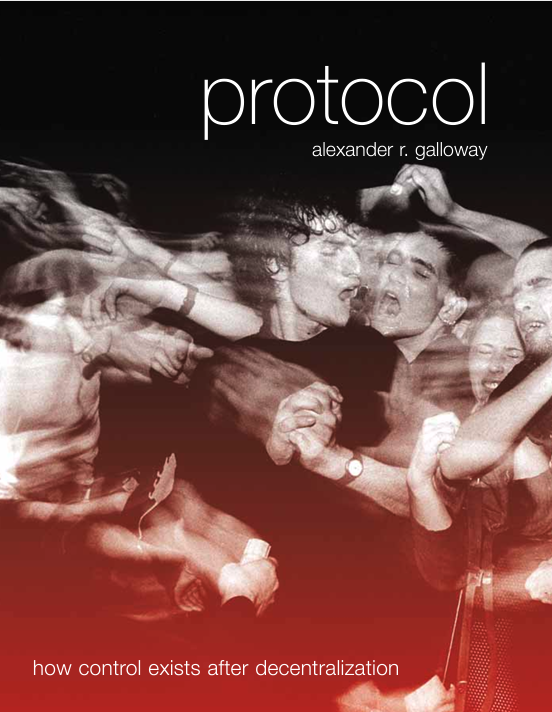
Despite the seemingly decentralized structure of the internet that offers unprecedented freedom and openness, it is still under the strict control of meticulously designed protocols and standards. These protocols, such as TCP/IP, not only form the backbone of network communication but also implicitly constitute a new form of control. This control is distributed, maintaining order and regulating behavior through technical means rather than through centralized policy enforcement or overt censorship. Thus, Galloway reveals how a space that appears free and decentralized is actually controlled and shaped by embedded protocols and technical norms, a revelation crucial to understanding the structure of power in the contemporary digital landscape.
Access from: Protocol
Access from: Protocol
Censorship
![]()
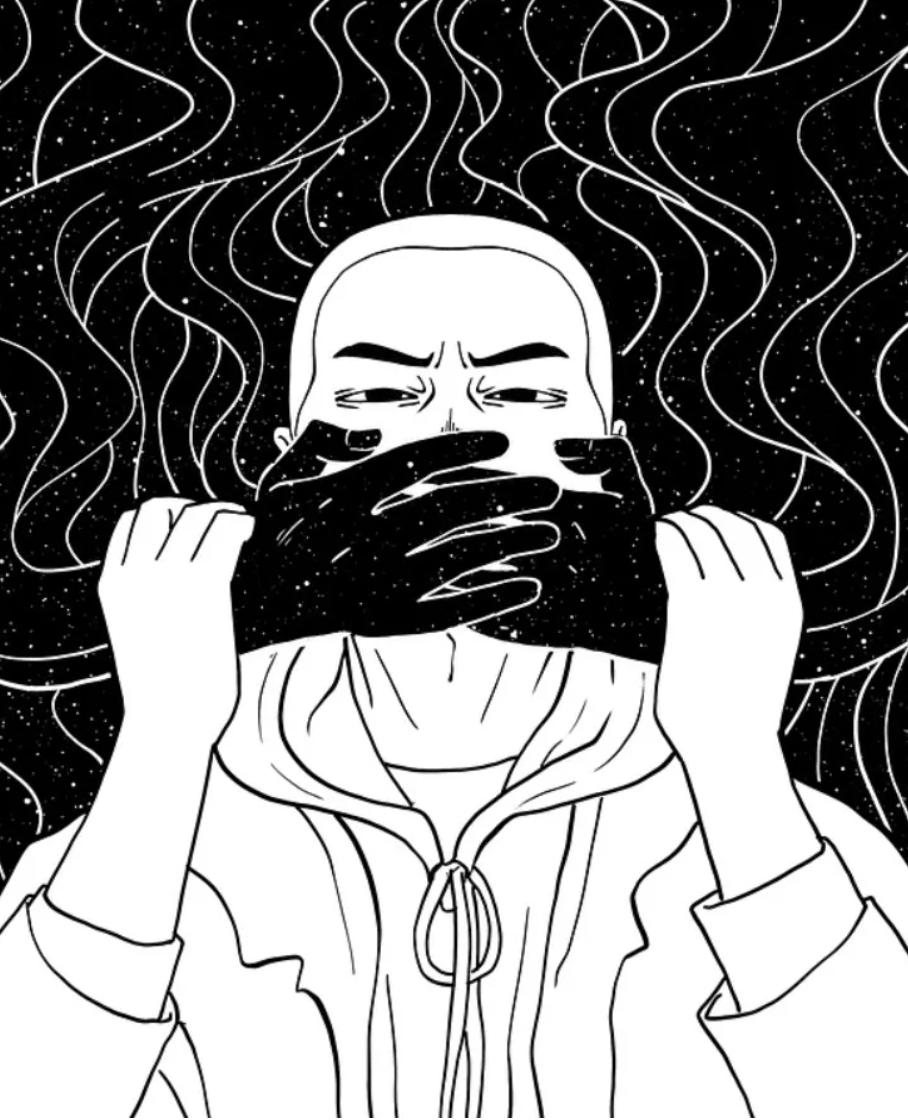
In some contexts, censorship is viewed as necessary for maintaining public order or preventing the spread of harmful ideas and misinformation. However, it often becomes a tool for limiting freedom of expression and suppressing differing viewpoints. In its extreme forms, censorship can lead to a lack of transparency, reduced accountability of authorities, and a general weakening of democratic processes.
Censorship's impact on society is profound. It not only restricts access to information but also hampers cultural and intellectual growth. In the digital age, where information dissemination is rapid and widespread, censorship challenges extend to the internet and social media. The balance between protecting societal interests and preserving individual rights of expression remains a contentious global debate.
Image Source: The Historical Case Against Censorship
Censorship's impact on society is profound. It not only restricts access to information but also hampers cultural and intellectual growth. In the digital age, where information dissemination is rapid and widespread, censorship challenges extend to the internet and social media. The balance between protecting societal interests and preserving individual rights of expression remains a contentious global debate.
Image Source: The Historical Case Against Censorship
Big Data and User Preferences

The advantage of big data lies in its ability to process and analyze vast amounts of information, providing in-depth insights and improving decision-making.
However, these advantages of big data come with potential risks related to user privacy, information security, data collection, and surveillance. The collection of massive data often involves sensitive personal information, such as purchase history, location data, and even personal preferences and behavioral patterns. Without proper privacy measures and security protocols, this information could be misused or subjected to cyberattacks, jeopardizing personal privacy and information security.
Furthermore, the application of big data raises questions about how power institutions might manipulate and influence user preferences and thoughts. Government agencies and large corporations could use big data analytics to gain deep insights into individual and group behaviors and might utilize this information to guide or manipulate public opinion and behavior. For example, social media platforms use algorithms to determine which content is displayed, potentially influencing users' information reception and opinion formation.
However, these advantages of big data come with potential risks related to user privacy, information security, data collection, and surveillance. The collection of massive data often involves sensitive personal information, such as purchase history, location data, and even personal preferences and behavioral patterns. Without proper privacy measures and security protocols, this information could be misused or subjected to cyberattacks, jeopardizing personal privacy and information security.
Furthermore, the application of big data raises questions about how power institutions might manipulate and influence user preferences and thoughts. Government agencies and large corporations could use big data analytics to gain deep insights into individual and group behaviors and might utilize this information to guide or manipulate public opinion and behavior. For example, social media platforms use algorithms to determine which content is displayed, potentially influencing users' information reception and opinion formation.
Image Source: Privacy in the Age of Big Data
3. Cymatics

when sound waves pass through a material, they cause the material to vibrate in a manner that corresponds to the frequency and amplitude of the waves. These vibrations can form complex and precise patterns, often exhibiting symmetry and geometric aesthetics.Cymatics has applications in fields such as music, art, education, and physics. It provides a visually intuitive way to observe sound and vibrations, and can be used in artistic endeavors to explore the visual representation of sound.
Image source: Cymatics.wiki
4. Media and Deception (Dis-information)
“The media is the message.” -- Marshall McLuhan
Disinformation refers to the deliberate spread of false information intended to deceive or mislead, distinguishing it from misinformation, which is the unintentional spread of false information. Common techniques and tactics in disseminating disinformation include fabricating entirely false stories, manipulating real information or images to create misleading contexts, impersonating identities or sources to lend credibility, selectively using truths to deceive, and employing social media bots and trolls for widespread distribution.
Disinformation is often propagated through social media platforms due to their extensive reach and ease of content sharing. Traditional media, including television and newspapers, can also be sources of disinformation.
5. Audience and Interaction
I studied interactive art and interactive installations in museums and came up with some ideas about audience interaction design.
They Are:
Clear instructions: Provide clear, concise instructions on how to interact with the artwork. This can be done through signage, guided commentary or interactive screens.
Visual cue: Use visual elements to draw the audience's attention and indicate how they should interact.
Illuminating question: Inspire curiosity and engagement by asking questions or setting situational challenges. These questions can be philosophical, about the meaning of the work, or about the viewer's own experience.
Interactive elements: Contains physically operable elements, such as buttons, touch screens, movable parts, etc., to facilitate the viewer's physical interaction with the work.
Dynamic feedback: Provide immediate visual, auditory or tactile feedback as the viewer interacts with the artwork, enhancing the attraction and satisfaction of the interactive experience.
6. Red - on behalf of Power (color reference)
RAISE THE RED LANTERN - directed by Zhang Yimou

Red in Chinese culture is often associated with celebration, wealth, and power.
In the film, the red lanterns, as a primary visual element, symbolize the master's favor and special attention to a particular wife. This favoritism brings temporary power and privileges, but also comes with intense competition and jealousy. Additionally, red also symbolizes control and oppression. The female characters in the film are trapped within strict traditions and rituals, which are emphasized and solidified through the use of red lanterns. The lanterns become tools for controlling the fate of the women, reflecting broader societal and cultural structures of gender inequality.
PERFECT BLUE - directed by Satoshi Kon
![]()
In this film, red is a symbol of power, desire and repression.
Red in the film symbolizes the complex relationship between power and desire, in contrast to blue, which symbolizes family and private space. This reflects the conflict and sense of repression between the protagonist's personal and professional lives. The film explores the exploitation and repression of human beings in a modern society with a capitalist structure. The protagonist, as an entertainer, her image and identity are commoditized, she is forced to become a symbol and loses her sense of personal reality. In the process, red becomes a disguise for power, masking the gaze and exploitation of the individual.

In this film, red is a symbol of power, desire and repression.
Red in the film symbolizes the complex relationship between power and desire, in contrast to blue, which symbolizes family and private space. This reflects the conflict and sense of repression between the protagonist's personal and professional lives. The film explores the exploitation and repression of human beings in a modern society with a capitalist structure. The protagonist, as an entertainer, her image and identity are commoditized, she is forced to become a symbol and loses her sense of personal reality. In the process, red becomes a disguise for power, masking the gaze and exploitation of the individual.
Inspiration
1. Installations








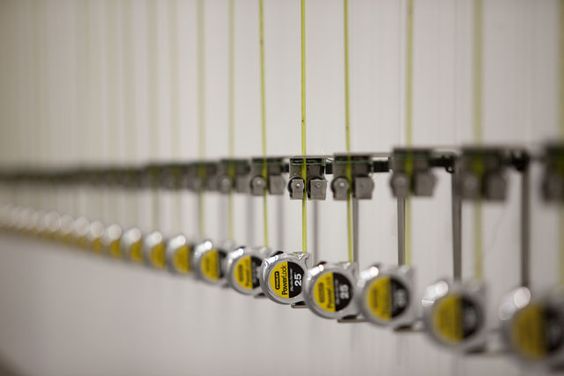







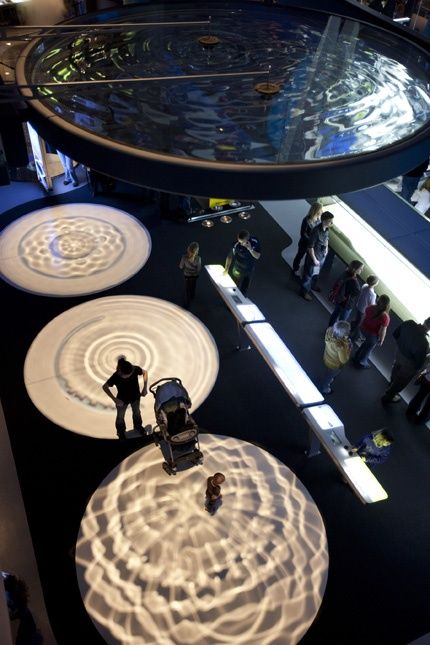


Videos about sound visualization and interaction:
https://www.youtube.com/watch?v=f1JTgyMi9OE
https://www.youtube.com/watch?v=Q3oItpVa9fs
https://vimeo.com/34533540
Artworks & Events:
THE UNILEVER SERIES by Aiweiwei
https://www.tate.org.uk/whats-on/tate-modern/unilever-series/unilever-series-ai-weiwei-sunflower-seeds
Reface [Portrait Sequencer] by Golan Levin
https://www.flong.com/archive/projects/reface/index.html
Augmented Hand Series by Golan Levin
https://www.flong.com/archive/projects/augmented-hand-series/index.html
Learning to See by Memo
https://www.memo.tv/works/learning-to-see/
DRAWING OPERATIONS by Sougwen
https://sougwen.com/project/drawing-operations-unit-generation-3
Brick Lane: Chinese political slogans
https://www.bbc.co.uk/news/uk-england-london-66391605
2. Panopticon Prison
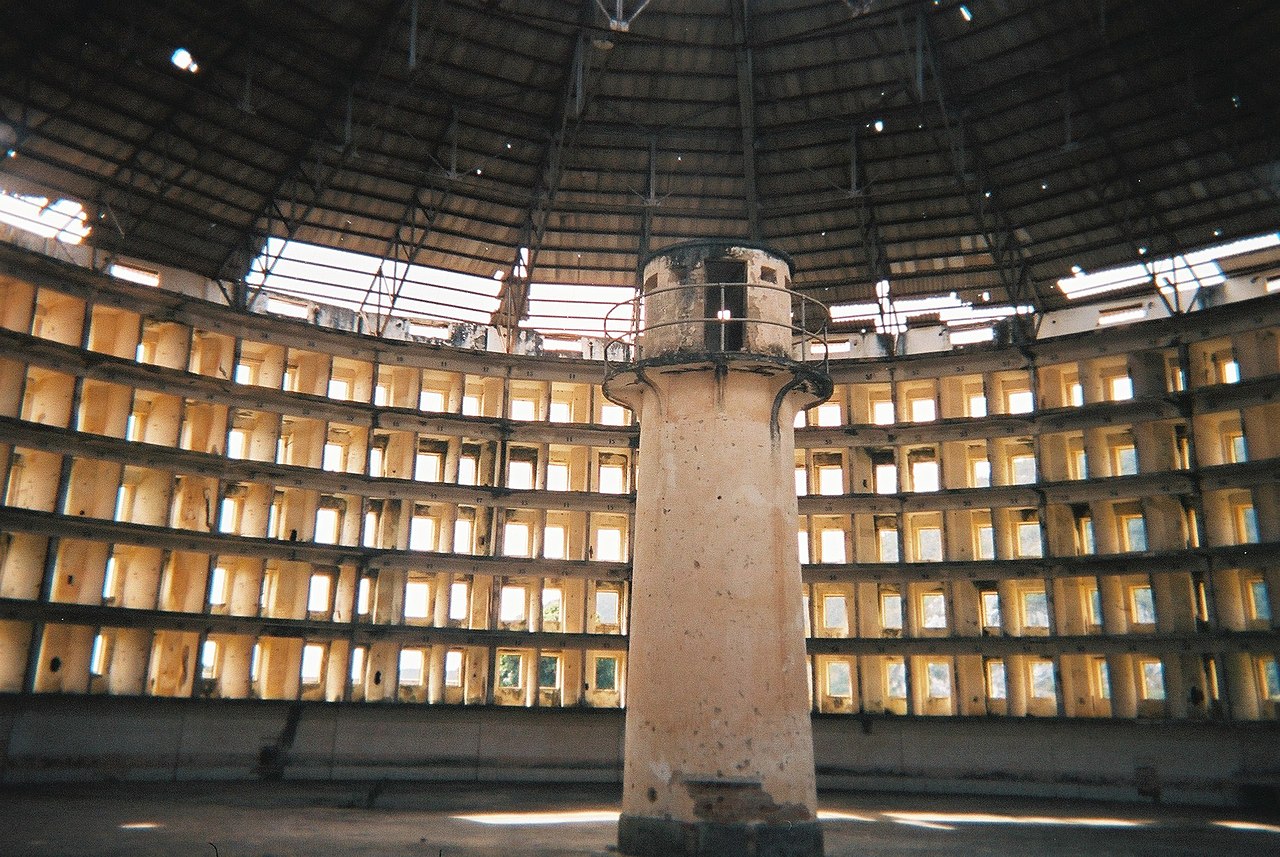
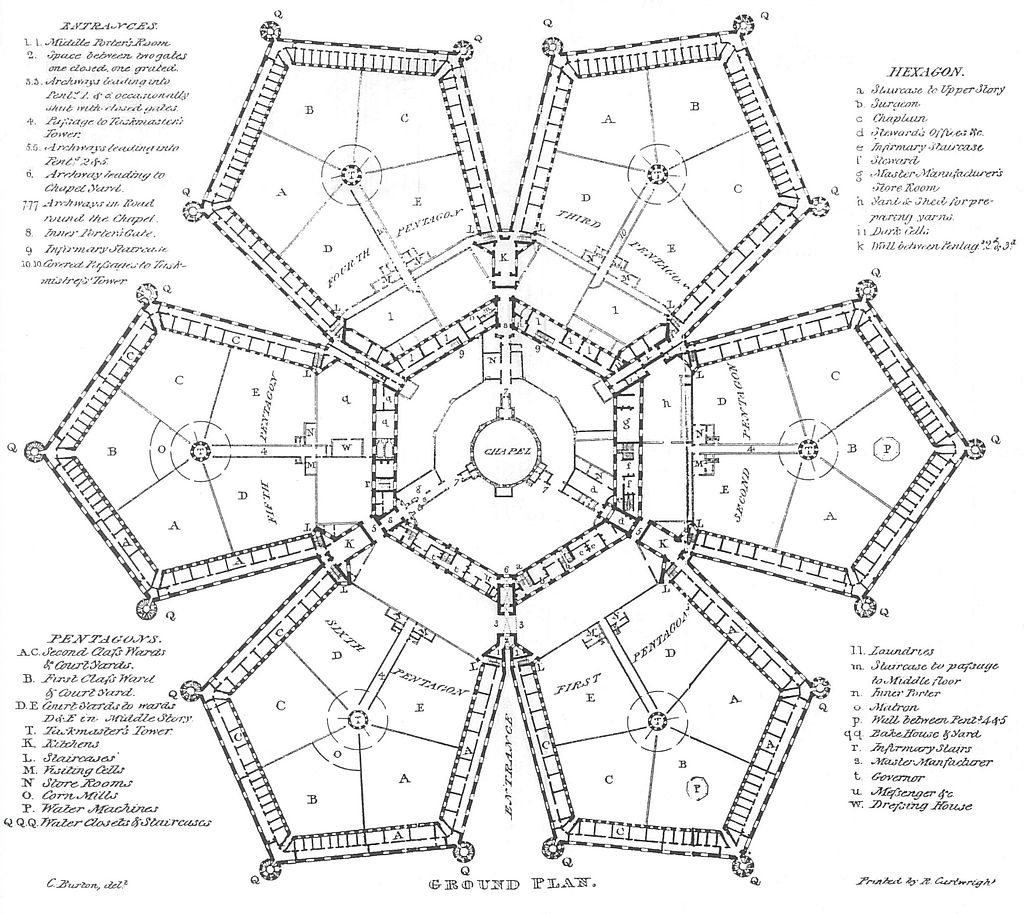
The Panopticon is not just a prison architecture; it represents a philosophical concept about power, surveillance, and social control. Bentham believed that this design could effectively monitor and control inmates while reducing the need for a large number of guards.
This design embodies a form of “invisible power” by making the monitored feel that they could be watched at any time, thereby prompting them to voluntarily follow rules and order.
The Panopticon also affected the later design I did ⬇️
Design
1. 3D Modeling


Version 1
Weakness:
1: The middle container is solid, can only shake together as a whole, can not show vibration from different directions.
2: The surrounding sound units do not have a proper fixed position, which can not take into account the beauty and functionality.
Weakness:
1: The middle container is solid, can only shake together as a whole, can not show vibration from different directions.
2: The surrounding sound units do not have a proper fixed position, which can not take into account the beauty and functionality.


Version 2
Improved the shortcomings.
A waterproof fabric was chosen for the container. The figures of elements are also adjusted with the materials I can get (shown below)
Improved the shortcomings.
A waterproof fabric was chosen for the container. The figures of elements are also adjusted with the materials I can get (shown below)
2. Elements & Material Choosing

Note:
1. Waterproof fabric and plastic film are chosen as the container to enhance the waterproof effect, so that electronic components can be protected from mistake.
2. Choosing powerful version speakers and amplifiers to make the effect more obvious.
1. Waterproof fabric and plastic film are chosen as the container to enhance the waterproof effect, so that electronic components can be protected from mistake.
2. Choosing powerful version speakers and amplifiers to make the effect more obvious.
Crit on 28th Dec 2023
Feedback:
Need to think about how to invite the audience to interact with the device.
Action Applied:
I made a supportive artwork, Individuals(click to check).
The picture of this work will become a part of the final stage of Waves as a invitation to the audiences. The audiences are free to share their views. When they talk about their thoughts, the sound will be captured by the microphone, thus the interaction between audiences and the installation happens.
Need to think about how to invite the audience to interact with the device.
Action Applied:
I made a supportive artwork, Individuals(click to check).
The picture of this work will become a part of the final stage of Waves as a invitation to the audiences. The audiences are free to share their views. When they talk about their thoughts, the sound will be captured by the microphone, thus the interaction between audiences and the installation happens.

Making Process
Frame making:
1. Material cutting in Matel Workshop
2. Material cutting
3. Make a "jig" with 3D Fabrication Workshop
4. Attach metal parts to the jig (photo missing🙏)
5. Welding in MW
6. Spray coloring
1. Material cutting in Matel Workshop
2. Material cutting
3. Make a "jig" with 3D Fabrication Workshop
4. Attach metal parts to the jig (photo missing🙏)
5. Welding in MW
6. Spray coloring
Component making:
1. 3D printing
2. (All elements will be used)
3. Welding circuit of speakers
4. Connection and test
5. (Speaker units)
6. Spray Coloring
1. 3D printing
2. (All elements will be used)
3. Welding circuit of speakers
4. Connection and test
5. (Speaker units)
6. Spray Coloring
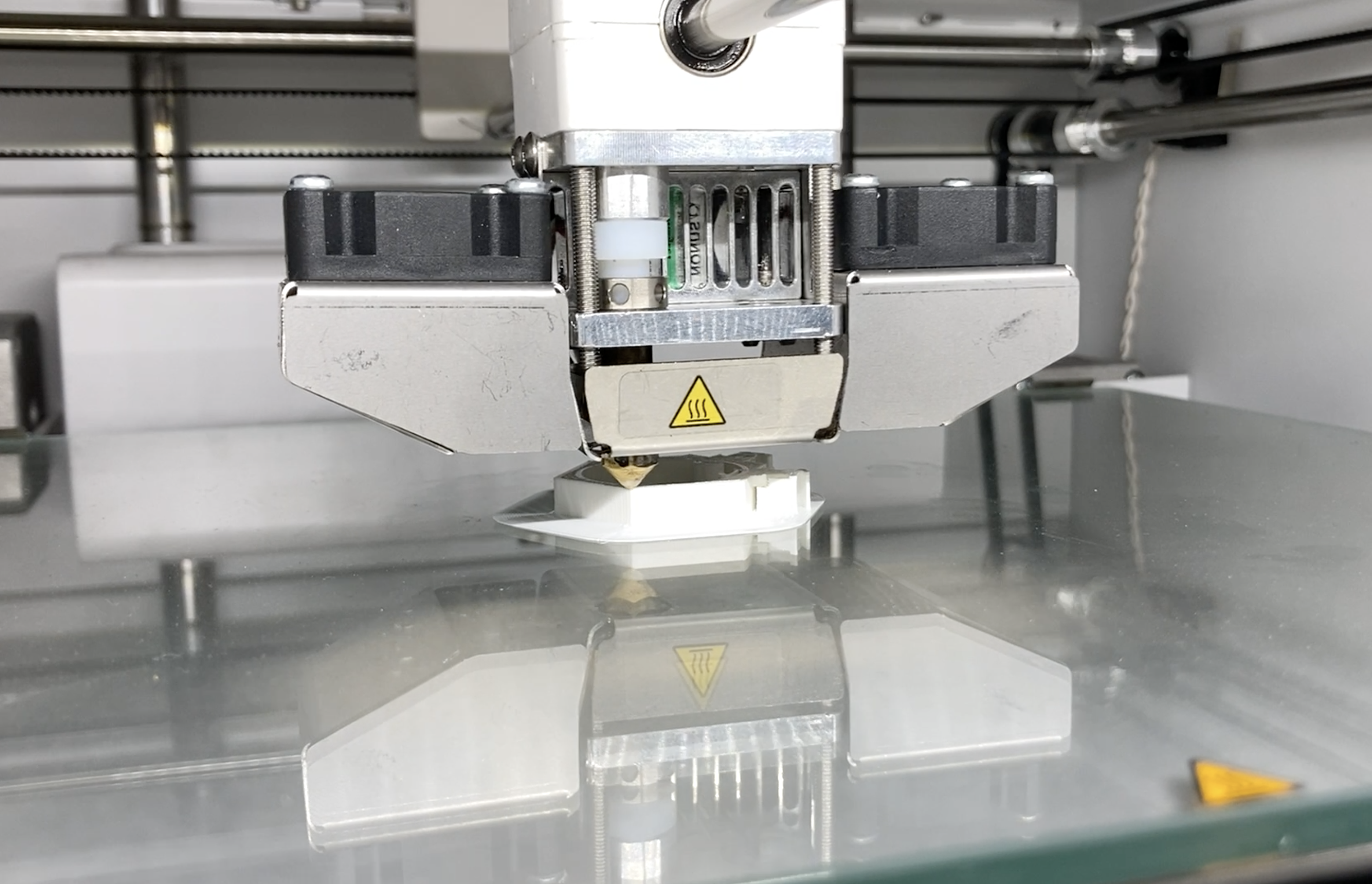
Installation assembly.
Connected and secured units with the iron rope.
Tried to control the audio unit with an audio adapter but failed (will try again later)
Outcome
(Progress Until 15/01/2024)



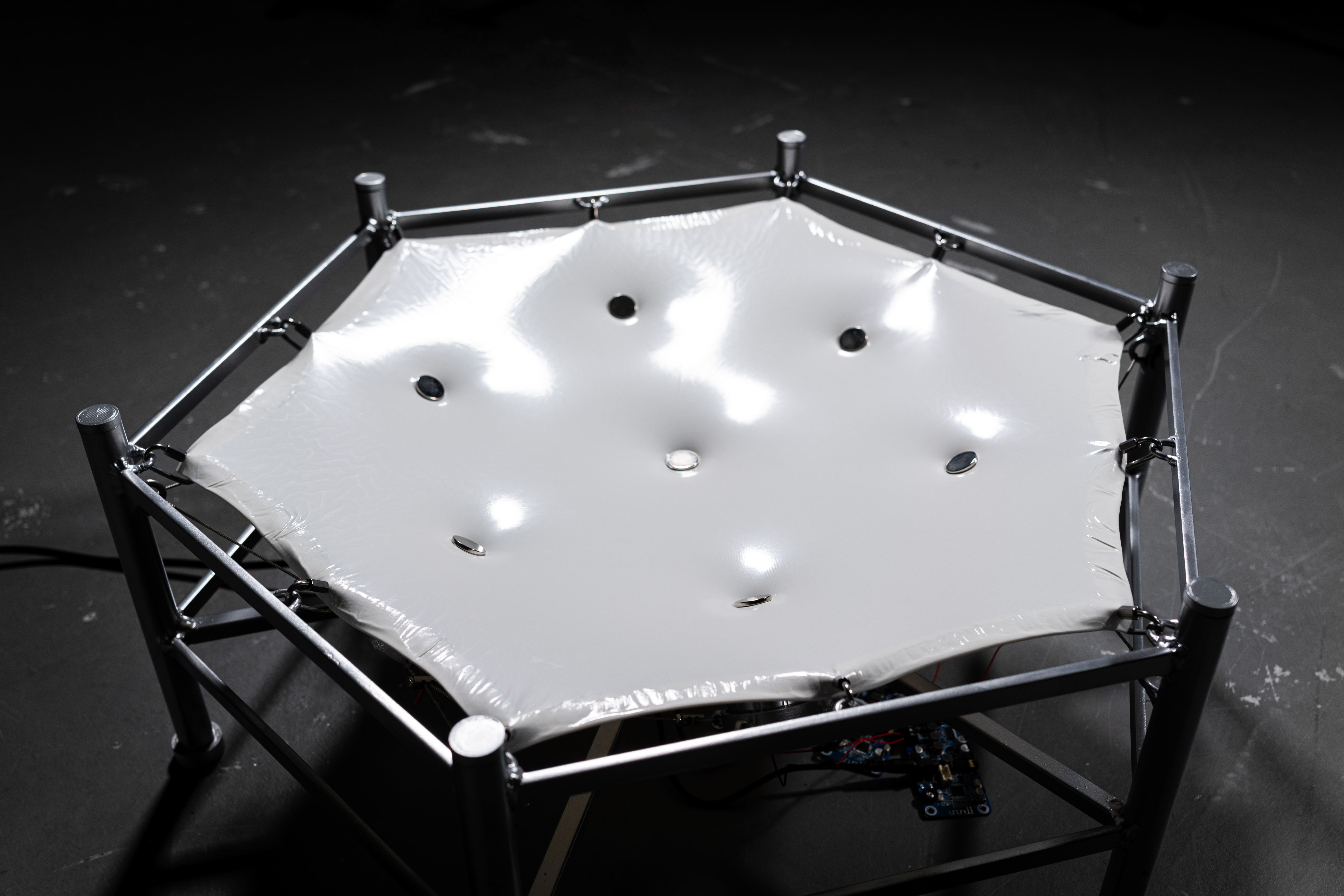

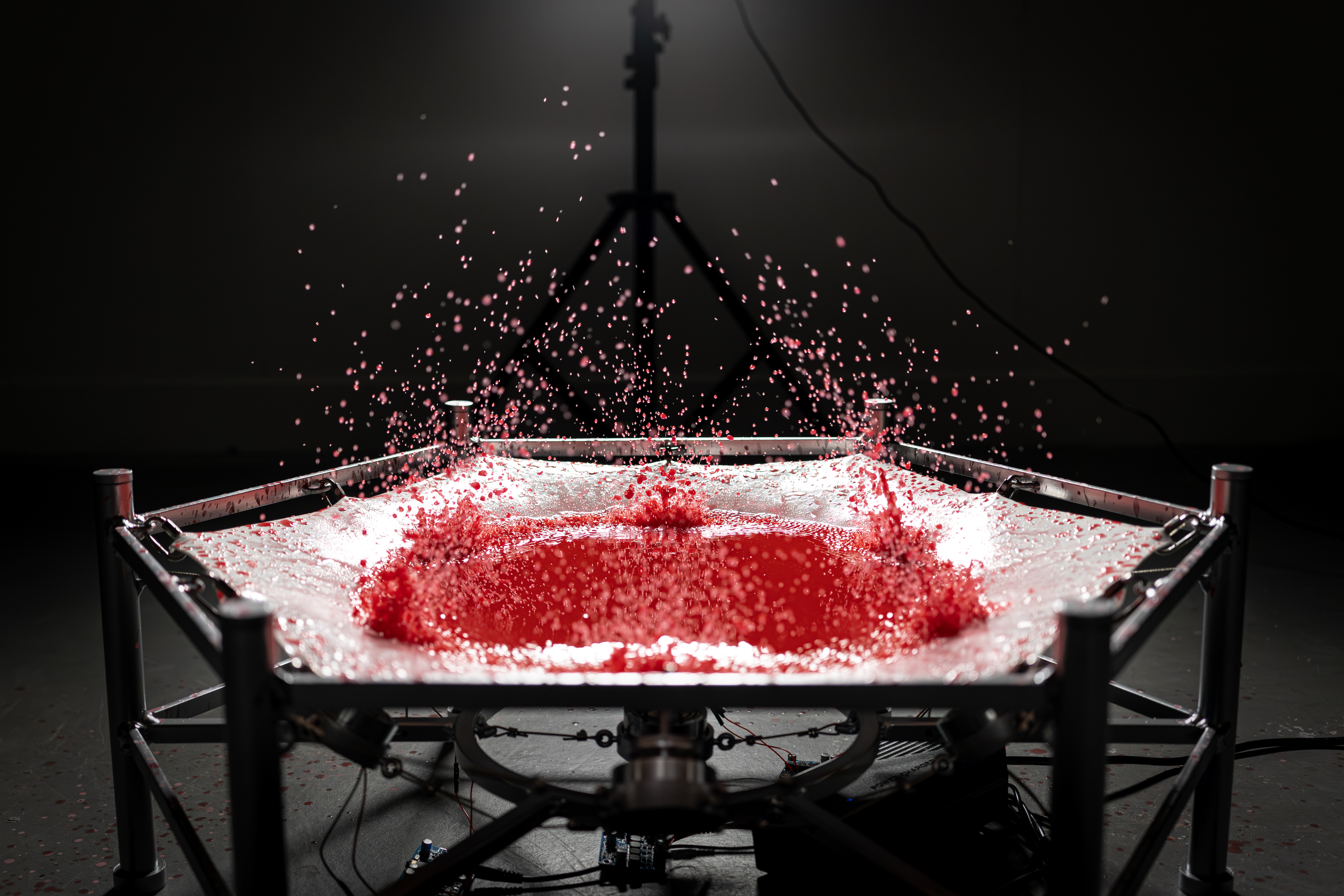


Reflection & Concerns
Thanks to the help of the teaching team and technicians from UAL, the overall progress of the project has been relatively smooth. However, there are still many areas that need reflection and improvement at the current stage.
Firstly, the interactive properties of the art installation need to be enhanced. It is challenging to control the feedback effect given to the audience by the liquid in the container based on vibration frequency and power. The effect is either too subtle to be observed, or too intense, causing the liquid to splash outside. Initial reflection suggests this may be due to not considering the density and viscosity of the liquid during the design phase. Later stages will require improvements to the liquid composition or the trial of other materials, such as sand or plastic particles.
Additionally, there have been difficulties in applying the principles of Cymatics to the installation during the practical phase. The principle of creating patterns in the liquid through Cymatics requires specific audio frequencies. However, the audio conceptually required for the piece, which includes the audience's voice and random other sounds, may not always fall within the optimal frequency band for liquid reactions in Cymatics. Future considerations include encoding the audio to ensure it always remains within the optimal frequency range, or abandoning the use of Cymatics patterns and simply relying on the visual effects generated by the vibration of speaker units.
Another point to consider is the choice of fabric for the container. Although it performed well in tests, being elastic and not permeated by the liquid, the possibility of it tearing or getting damaged over long periods of operation cannot be ruled out. This could be catastrophic for the electronic devices in the installation. However, since the initial production is already complete, it is challenging to modify the design of the container. Therefore, the medium for displaying patterns inside the container needs improvement, as mentioned in the first point.
The method of connecting the equipment needs to be improved. The electronic part of the installation consists of 7 audio units and 4 audio driver boards (meaning there are 4 audio channels). During testing, the audio units were connected to the computer via Bluetooth. However, due to the hardware limitations of the MacBook Pro 2019, only 3 channels could be connected simultaneously via Bluetooth. In the later stages, it will be necessary to introduce an audio interface device to control all 4 channels simultaneously, or to try a different computer with Bluetooth capabilities.
Firstly, the interactive properties of the art installation need to be enhanced. It is challenging to control the feedback effect given to the audience by the liquid in the container based on vibration frequency and power. The effect is either too subtle to be observed, or too intense, causing the liquid to splash outside. Initial reflection suggests this may be due to not considering the density and viscosity of the liquid during the design phase. Later stages will require improvements to the liquid composition or the trial of other materials, such as sand or plastic particles.
Additionally, there have been difficulties in applying the principles of Cymatics to the installation during the practical phase. The principle of creating patterns in the liquid through Cymatics requires specific audio frequencies. However, the audio conceptually required for the piece, which includes the audience's voice and random other sounds, may not always fall within the optimal frequency band for liquid reactions in Cymatics. Future considerations include encoding the audio to ensure it always remains within the optimal frequency range, or abandoning the use of Cymatics patterns and simply relying on the visual effects generated by the vibration of speaker units.
Another point to consider is the choice of fabric for the container. Although it performed well in tests, being elastic and not permeated by the liquid, the possibility of it tearing or getting damaged over long periods of operation cannot be ruled out. This could be catastrophic for the electronic devices in the installation. However, since the initial production is already complete, it is challenging to modify the design of the container. Therefore, the medium for displaying patterns inside the container needs improvement, as mentioned in the first point.
The method of connecting the equipment needs to be improved. The electronic part of the installation consists of 7 audio units and 4 audio driver boards (meaning there are 4 audio channels). During testing, the audio units were connected to the computer via Bluetooth. However, due to the hardware limitations of the MacBook Pro 2019, only 3 channels could be connected simultaneously via Bluetooth. In the later stages, it will be necessary to introduce an audio interface device to control all 4 channels simultaneously, or to try a different computer with Bluetooth capabilities.

